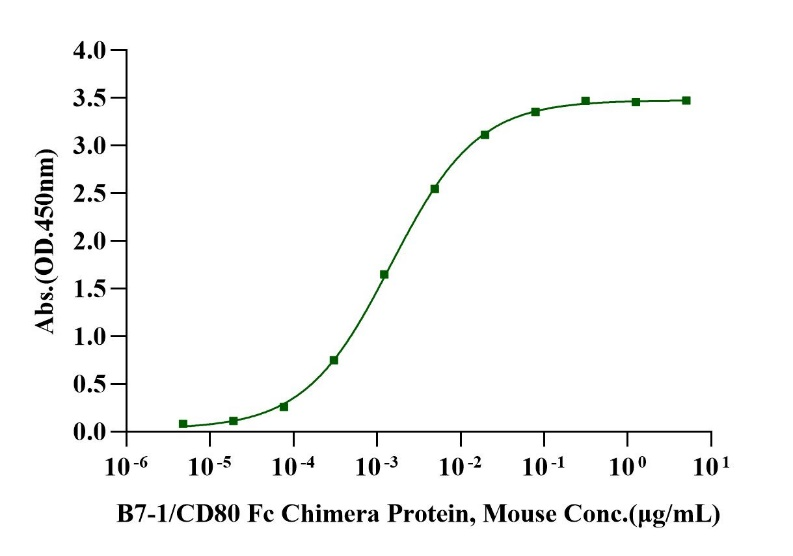19-26kDa (Reducing)
Reconstitute at 0.1-1mg/ml according to the size in ultrapure water after rapid centrifugation.
Zhang L, Wang Y, Wang L, Wang M, Li S, He J, Ji J, Li K, Cao L. Identifying survival of pan-cancer patients under immunotherapy using genomic mutation signature with large sample cohorts. J Mol Med (Berl). 2023 Nov 18. Gnirck AC, Philipp MS, Waterhölter A, Wunderlich M, Shaikh N, Adamiak V, Henneken L, Kautz T, Xiong T, Klaus D, Tomczyk P, Al-Bahra MM, Menche D, Walkenhorst M, Lantz O, Willing A, Friese MA, Huber TB, Krebs CF, Panzer U, Kurts C, Turner JE. Mucosal-associated invariant T cells contribute to suppression of inflammatory myeloid cells in immune-mediated kidney disease. Nat Commun. 2023 Nov 15;14(1):7372.
Cytotoxic T-lymphocyte protein 4, also known as CTLA4 and CD152, is a single-pass type I membrane protein. CTLA4 is a member of the immunoglobulin superfamily, which is expressed on the surface of Helper T cells and it is also found in regulatory T cells. CTLA4 is similar to the T-cell co-stimulatory protein, CD28, and both molecules bind to CD80 and CD86, also called B7-1 and B7-2 respectively, on antigen-presenting cells. CTLA4 transmits an inhibitory signal to T cells, whereas CD28 transmits a stimulatory signal. Fusion proteins of CTLA4 and antibodies (CTLA4-Ig) have been used in clinical trials for rheumatoid arthritis.
1μg (R: reducing condition, N: non-reducing condition).

Immobilized CTLA-4/CD152 His Tag Protein, Rat (Cat. No. UA010792) at 2.0μg/mL (100μL/well) can bind B7-1/CD80 Fc Chimera Protein, Mouse (Cat. No. UA011080) with EC50 of 1.36-1.57ng/mL.